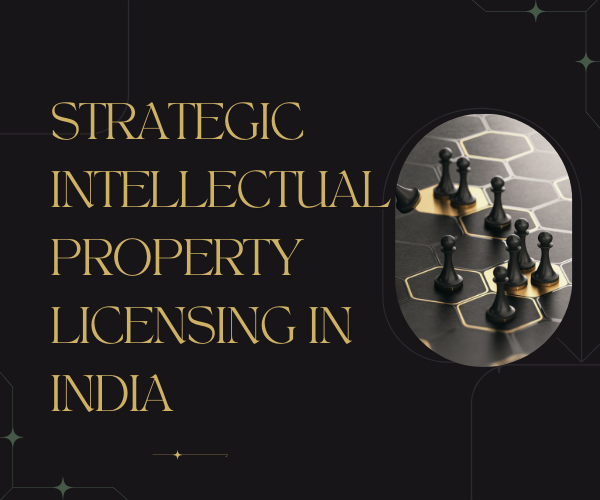
INTRODUCTION
The administration and assignment of intellectual property rights, encompassing patents, copyrights, trademarks, designs, geographical indications, and proprietary knowledge, are critical for all business entities, particularly those in the technology sector. The effective handling and assignment of these rights are key drivers of a company’s profitability, fostering innovation. Licensing is a legal tool that permits the utilization or reuse of already protected intellectual property. This raises discussions on various factors influencing the decision of licensors and licensees regarding the licensing process. These factors include, but are not limited to, the division of manufacturing or production risks, the financial burden of research and development, time efficiency over creating a new, market expansion, and the fusion of innovative ideas and products. Thus, each decision to license or receive a license for intellectual property should be grounded in a thoughtful evaluation of these elements and the specific business requirements of the parties involved.
Licensing intellectual property (IP) serves as a strategy for companies and organizations to develop additional or main streams of income. This method enhances brand recognition and overall reputation, while also enabling expansion into new global markets and regions cost-effectively. However, it’s important to note that when the validity or ownership of IP is uncertain or poorly defined, licensing can lead to significant business and financial challenges. With this in mind, we will examine various approaches that can aid companies and organizations in making the process of IP licensing more straightforward and successful.
FIRST STEP TOWARDS LICENSING:
Licensing arrangements offer various opportunities for both parties involved – the licensor and the licensee. A critical first step for the licensor is to set up a confidentiality or non-disclosure agreement with the licensee prior to sharing any details related to intellectual property. These agreements play a crucial role in protecting the licensor’s IP by ensuring that the party receiving the information handles it appropriately. On the other hand, for the licensee, conducting an in-depth investigation into the ownership of the IP and evaluating its market value accurately is essential before entering into any licensing agreement.
LICENSE TERMS UNDER LICENSING AGREEMENTS:
It’s crucial to specify the key terms and conditions in the applicable licensing agreement. The licensor and licensee must comprehend and negotiate several important elements, which include:
- Choice between an exclusive or a non-exclusive licensing arrangement.
- Considerations for sub-licensing, including any specific limitations or financial terms.
- Financial arrangements of the license, including options like a one-time fee, periodic payments, royalties based on sales, rate increases, etc.
- Specific usage constraints or limits on the IP, such as field-specific licensing restrictions.
- Rules regarding integrating a portion or the entirety of the IP into another creation or combining it with other products or works.
- Rights over enhancements or modifications made to the IP.
- Guarantees or usage restrictions for the IP, for instance, usage confined to a specific platform.
- The term of the license, distinguishing between perpetual or time-limited agreements. For example, patents have time-bound licensing, whereas trademarks can be licensed indefinitely, subject to periodic renewal by the licensor. Generally, the licensing duration should align with relevant legal statutes.
- Conditions leading to the termination of the license.
- Plans for business continuity in scenarios where the licensor or licensee cannot continue operations, including provisions like source code escrow.
- Provisions for changes in the control of the licensee, such as termination of the license if the licensee is acquired by a competitor of the licensor.
- Duties and rights after the license ends , particularly concerning confidentiality.
- Laws that govern the agreement.
- Procedures for dispute resolution.
In addition to the elements already discussed, it’s important to focus on clauses that address liability limits, warranties, insurance requirements, security measures, and adherence to regulations regarding the handling and use of IP. A comprehensive licensing agreement should carefully integrate these aspects into its terms and conditions. While the points outlined serve as a basic framework, those entering into a licensing agreement have the leeway to tailor these terms according to their needs, while staying within legal boundaries. It’s imperative for both licensors and licensees to thoroughly review and concur on these terms prior to finalizing an agreement. This method promotes a clear understanding between the parties and reduces the likelihood of future conflicts.
LEGAL REQUIREMENTS FOR LICENSING AGREEMENTS IN INDIA
– Formalizing the Agreement – Within the context of Indian law, it’s common to register license agreements with the Registrar of Trade Marks and the Copyright Office. This step formalizes the agreement, safeguarding the rights of both the licensor and licensee. It confirms the authenticity and ownership of the agreement, playing a key role in resolving disputes and serving as proof in legal cases related to infringement. The agreement usually contains a grant clause detailing the specific IP being licensed and the permissions given to the licensee. The consideration clause, which outlines the financial aspects like upfront fees and continuous royalties based on sales, is equally important. The duration of the agreement must be clearly stated and should match the legal lifespan of the IP. Warranty clauses are critical as they represent promises made by both parties, and their breach could result in agreement termination. Lastly, it’s wise to include dispute resolution methods in the agreement to manage potential conflicts effectively.
– Royalty Payments – Royalties are compensations paid by the licensee to the licensor for using their IP. Typically, these are a percentage of the revenue generated from the IP. Common in agreements involving software, copyrights, patents, and trademarks, the license specifies the royalty amount, its calculation method, and payment schedule. Failure to comply, including missing royalty payments, can lead to termination of the agreement and possibly legal action.
– Common Royalty Types:
– Book Royalties – Authors receive these from publishers, earning a predetermined amount for each book sold.
– Performance Royalties – Owners of copyrighted music receive payments when their music is broadcast, used in films, or played by others.
– Patent Royalties – Innovators who patent their inventions receive payments when third parties use their patented products, as per the licensing agreement.
– Franchise Royalties – Franchisees pay these to franchisors for the right to operate a business under the franchisor’s brand.
– Mineral Royalties – Extractors of minerals pay property owners based on either the revenue generated or the quantity of minerals extracted.
STAMP DUTY:
The stamp duty payable for a licensing agreement depends on the Stamp Act applicable in the particular state in India where the agreement is signed.
CONCLUSION:
Given the significant commercial advantages that licensing agreements provide to businesses and inventors, it’s crucial to pay close attention to the specifics included in the licensing agreement. Additionally, in view of these considerations, adherence to all relevant laws governing the licensing framework is essential.
*Author – Uttara Nair
